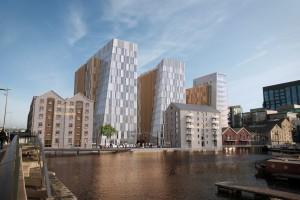Office supply shortage in Dublin likely to continue
 New research from property consultants, Savills, has found that 30,000 employees could be accommodated in office space currently under construction in Dublin.
New research from property consultants, Savills, has found that 30,000 employees could be accommodated in office space currently under construction in Dublin.
In total, 35 new office buildings, comprising almost 3.5 million sq ft of space, are on-site – with the vast majority situated in the Central Business Districts (CBD) of Dublin 1, 2 and 4. Approximately one-third of that space is already pre-committed to an occupier. Some development is taking place within the boundaries of a Strategic Development Zone in Dublin’s north and south docks, however, with a number of planning applications in place, activity in the area is expected to increase significantly this year.
Despite the significant increase in office development activity, the supply shortage is likely to continue due to the time lag between construction and completion. Andrew Cunningham, Head of Offices at Savills Ireland, believes this will continue to drive rents in an upward trajectory.
“In an ideal world, the delivery of office space would be instantaneous. However, in reality, it takes time. The average lag time between planning, construction and completion is 2-3 years. In the interim, it stands to reason, as evidenced by the current rate of growth, that rents will continue to rise. Today, prime CBD office space is being let for €55 per square foot and we expect this to rise to €65 by the end of 2016. Where rents will go after that is completely dependent on the delivery of new stock and, of course, economic conditions.”
At the end of the previous office construction cycle, oversupply combined with a complete cessation of tenant demand, led to a sharp decline in office rents; however, Savills does not envisage this problem occurring in the near future.
“Construction finance, which was freely available for a long period during the last cycle, is much more difficult to obtain now,” said Cinningham. “This has led to a slower pick up in development and generally only the most professional developers are obtaining it. Aside from new construction currently underway, there are also a significant number of redevelopments taking place. Redevelopments mean taking office space out of the supply chain, so despite this new wave of construction, we are likely to end up with less space rather than more in the immediate short term due to demolition of old 1970/80s buildings which are unwinding from old 35 year leases – a new phenomenon in this cycle versus the last.”
